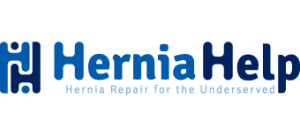Dajabon, October 2013
HRFU Dajabon hernia team trip summary – first draft
Our mission in Dajabon started on Sun. Oct. 10th 2013. On the way to Dajabon, on an ILAC bus, we met Dr. Lesly Manigat and together with him we arrived at the guest house of the textile factory CODEVI. The textile factory is located on the Haitian Dominican border between Dajabon and Quanaminthe Haiti. Our accommodations at CODEVI were prepared and absolutely decent as well as the refectory and the quality of the food prepared by them.
On Sunday afternoon we immediately went to the Ramon Menla Hospital in order to unload the huge quantity of supplies, medicines, instruments and meshes and to take a look at the operating sites.
Upon our arrival we were able to get the OR and the adjacent rooms opened by a local nurse that was surprised about our presence there. The rooms next to the OR were basically 4; one for sterilization and storage of the material, one for the pre-surgical stay of the patient, one for the doctors’ wardrobe and one as entrance. The sterilizer was old but with the help of a local person we were able to provide safe sterilization
.
The two ORs were illuminated only by the light coming from the windows without any electric light source so our surgeries were executed with a table light and the outside light. The anesthesia equipment wasn’t working despite efforts to have it repaired. In spite of the unexpectedly poor logistic situation we were able to set up everything in order to start the surgical session on Monday morning.
But on Monday morning there were no patients, no local doctors, no chief doctor and no chief executive and only in mid-morning, after a long investigation, were we able to talk to the chief executive. However, thanks to the help of Dr. Manigat and the fact that the news about our arrival was spread out, on Tuesday afternoon we started with our first operations both on Dominican and Haitian patients but at the end we were able to do only 30 surgeries throughout the whole week. In spite of all this we were able to do the training of a Haitian surgeon Dr. Lamah, using the HRFU validated rating forms for the Lichtenstein repair. Upon completion is was given 20 pieces of donated mesh to be used on poor patients only. See the below photographs.
Thanks to Dr. Filipi, Dr. Manigat, Dr. Cavalli, Dr. Pelizzola, Dr. Pavoni, Dr. Shambhu, Dr. Boutrous, Dr. Piludu, Mr. Del Monte, Miss Minnick, Miss Fry and Mr. Maffioli. The patients did well and the training was satisfactory despite the logistics being very poor with the local cooperation being practically non-existent despite previous assurances. Therefore our organizational effort was out of proportion as compared to what were actually able to achieve.
Prof. Giampiero Campanelli







